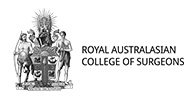Not all prostate cancers that are detected are considered to be clinically significant. In such cases, the doctor may recommend simple Active Surveillance of cancer by routine follow-ups, if treatment is not yet needed.
Active surveillance aims to prevent the overtreatment of clinically insignificant cancers that may never cause you a problem.
If the prostate cancer appears to be potentially insignificant then it is monitored periodically with PSA tests and repeat biopsies.
If it appears that the cancer is progressing, then active primary therapy can be performed at that stage.
The criteria for active surveillance are yet to be fully defined but generally include low volume low grade disease. Active surveillance protocols continue to be defined and are yet to be fully validated. The timing of when to intervene is ill-defined and studies are currently underway to determine what constitutes disease progression and when to intervene.
Advantages
- Aims not to over-treat a potentially clinically insignificant cancer.
- Avoids the complications of treatment.
- Quality of life is maintained.
- Decreased initial costs.
Disadvantages
- Prostate examination, prostate biopsy and PSA tests may not accurately determine whether the cancer is indeed insignificant from the outset.
- Chance of missed opportunity for cure.
- The cancer may progress or spread while on surveillance so that it may require more extensive treatment or become incurable.
- Treatment of a larger, more intense cancer may be more intense with greater side effects.
- Nerve-sparing at subsequent prostatectomy may be more difficult which may reduce the chance of potency preservation after surgery.
- The anxiety associated with living with untreated cancer.
- The need for intense follow-up.




